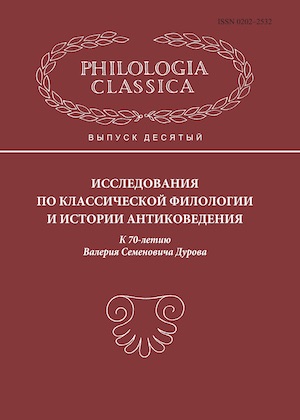Два примера осознанного использования hysteron proteron в ранних поэмах Вергилия (Verg. Buc. VI, 42 и Georg. III, 60–61)
Аннотация
В статье разбираются особенности использования hysteron proteron в Verg. Buc. VI, 42 и Georg. III, 60–61. Показывается, что в этих двух случаях Вергилий использовал hysteron proteron осознанно, моделируя стих по образцу hysteron proteron у Гомера (Verg. Buc. VI, 42 ~ Hom. Il. II, 100; Verg. Georg. III, 60 ~ Hom. Il. III, 40), и притом нивелируя с помощью контекста элемент нелогичности, от природы присущий данному явлению. Разобранные пассажи позволяют заглянуть в поэтическую лабораторию Вергилия, прекрасно знавшего как гомеровский эпос, так и александрийскую филологическую традицию и опиравшегося на греческий опыт в поисках собственного поэтического голоса.
Ключевые слова:
hysteron proteron, Вергилий, Гомер, александрийская филологическая традиция
Скачивания
Библиографические ссылки
Загрузки
Опубликован
Как цитировать
Выпуск
Раздел
Лицензия
Статьи журнала «Philologia Classica» находятся в открытом доступе и распространяются в соответствии с условиями Лицензионного Договора с Санкт-Петербургским государственным университетом, который бесплатно предоставляет авторам неограниченное распространение и самостоятельное архивирование.






